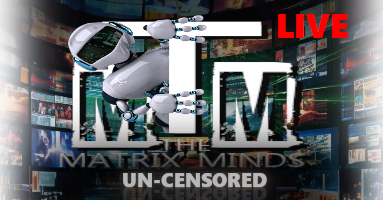 In discussions surrounding wealth disparity, a prevailing sentiment often emerges: the elite holding fast to the adage of “do not cast pearls to swine,” with the implication that the poor and middle class are considered as such. This analogy reflects a perception of an intellectual and cultural divide between socioeconomic classes. In this article, we will delve into the origins and implications of this metaphor, exploring the complexities of wealth inequality and its impact on societal dynamics.
In discussions surrounding wealth disparity, a prevailing sentiment often emerges: the elite holding fast to the adage of “do not cast pearls to swine,” with the implication that the poor and middle class are considered as such. This analogy reflects a perception of an intellectual and cultural divide between socioeconomic classes. In this article, we will delve into the origins and implications of this metaphor, exploring the complexities of wealth inequality and its impact on societal dynamics.
Origins of the Metaphor
The saying “do not cast pearls to swine” traces its roots back to ancient texts and philosophical traditions. In its original context, it serves as a cautionary message advising against wasting valuable or precious things on those who cannot appreciate or comprehend their worth. Applied to the socioeconomic realm, the metaphor implies that the wealthy elite possess knowledge, resources, and opportunities that they may withhold from the less affluent segments of society.
Economic Disparities and Access to Resources
One crucial aspect underlying the “pearls to swine” analogy is the stark economic disparities that exist in society. Wealth concentration in the hands of the few can create a divide in access to resources such as quality education, healthcare, and networking opportunities. The lack of access perpetuates a cycle of limited upward mobility, hindering the ability of the poor and middle class to bridge the knowledge and opportunity gap.
Cultural Capital and Social Exclusion
Cultural capital, encompassing knowledge, education, and exposure to diverse experiences, plays a significant role in societal stratification. The elite, often possessing greater cultural capital, can leverage their resources to access exclusive networks, prestigious institutions, and
access to resources, promoting social mobility, bridging the knowledge gap, and cultivating empathy and understanding. By creating a more inclusive society, we can work towards a future where opportunities are not limited by socioeconomic status.
It is crucial for the elite to recognize their role in shaping a more equitable society. By leveraging their resources, influence, and cultural capital, they can actively contribute to breaking down barriers and providing opportunities for those less privileged. This may involve supporting initiatives that promote education, mentorship programs, and entrepreneurship in underserved communities.
Additionally, it is important for individuals from all socioeconomic backgrounds to challenge the “pearls to swine” analogy and its underlying assumptions. Instead of perpetuating divisions, we should seek to build bridges of understanding, empathy, and collaboration. By recognizing and valuing the inherent worth, potential, and aspirations of every individual, regardless of their economic status, we can foster a more inclusive and just society.
In conclusion, the “pearls to swine” analogy reflects a perception of wealth disparity and the potential exclusion of the poor and middle class from valuable resources and opportunities. However, addressing this issue requires a nuanced understanding of systemic factors, equalizing access to resources, promoting social mobility, bridging the knowledge gap, and fostering empathy and understanding. By working collectively to create a more inclusive society, we can move towards a future where socioeconomic status does not determine one’s worth or opportunities for success.
However, it is important to acknowledge that not all members of the elite subscribe to the notion of withholding resources from the less privileged. Many individuals and organizations within the upper echelons of society actively work towards philanthropic efforts, social initiatives, and advocacy for social and economic equality. These individuals recognize their privilege and use it as a platform for positive change.
Furthermore, it is crucial to move beyond a binary understanding of the “pearls to swine” analogy. Socioeconomic classes are not monolithic entities, and individuals within each class possess a range of backgrounds, abilities, and aspirations. Stereotyping the poor and middle class as unworthy or incapable disregards the inherent value and potential within these diverse segments of society.
To foster a more inclusive society, it is essential to address the root causes of wealth disparity and social exclusion. This requires systemic changes such as fair taxation policies, equitable access to education and healthcare, affordable housing, and a commitment to reducing income inequality. It also necessitates dismantling systemic barriers that perpetuate cycles of poverty and limited opportunities.
Additionally, promoting dialogue, empathy, and collaboration between different socioeconomic groups is crucial. By creating spaces for meaningful conversations, shared experiences, and understanding, we can break down the barriers that contribute to stereotypes and divisions. This includes fostering opportunities for interaction, promoting diversity and inclusion in all sectors, and encouraging empathy-building initiatives.
Ultimately, building a more equitable society requires collective effort and a commitment to dismantling systems of privilege and inequality. It is not solely the responsibility of the elite to bridge the gap, but a collective responsibility that requires collaboration and solidarity across all socioeconomic classes. By working together, we can challenge the “pearls to swine” mentality and strive towards a society where everyone has equal access to resources, opportunities, and the chance to reach their full potential.
In conclusion, while the “pearls to swine” analogy may reflect a perception of wealth disparity and exclusion, it is important to recognize the complexity of socioeconomic dynamics. Addressing these challenges requires systemic changes, fostering empathy and understanding, and collective efforts to create a more inclusive and equitable society. By transcending stereotypes and working towards shared goals, we can overcome divisions and build a future that uplifts and empowers all members of society.




Leave a Reply
Want to join the discussion?Feel free to contribute!